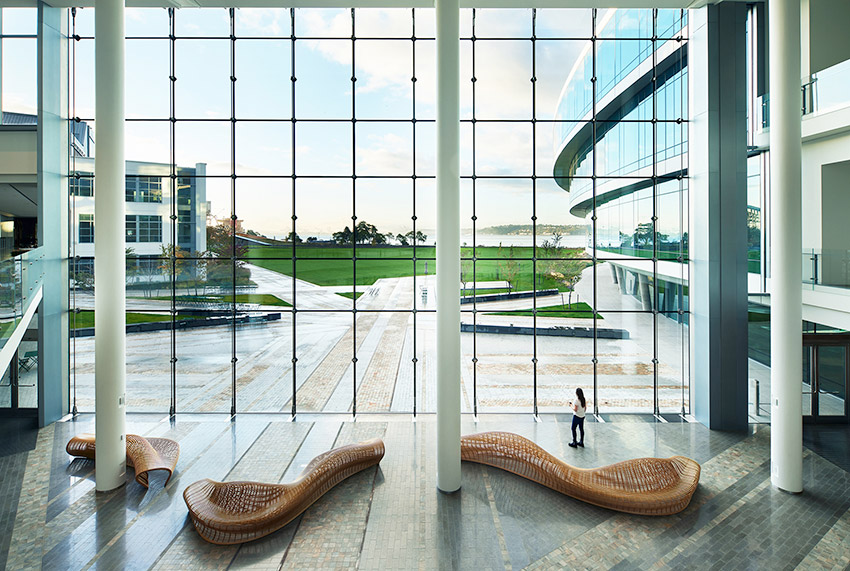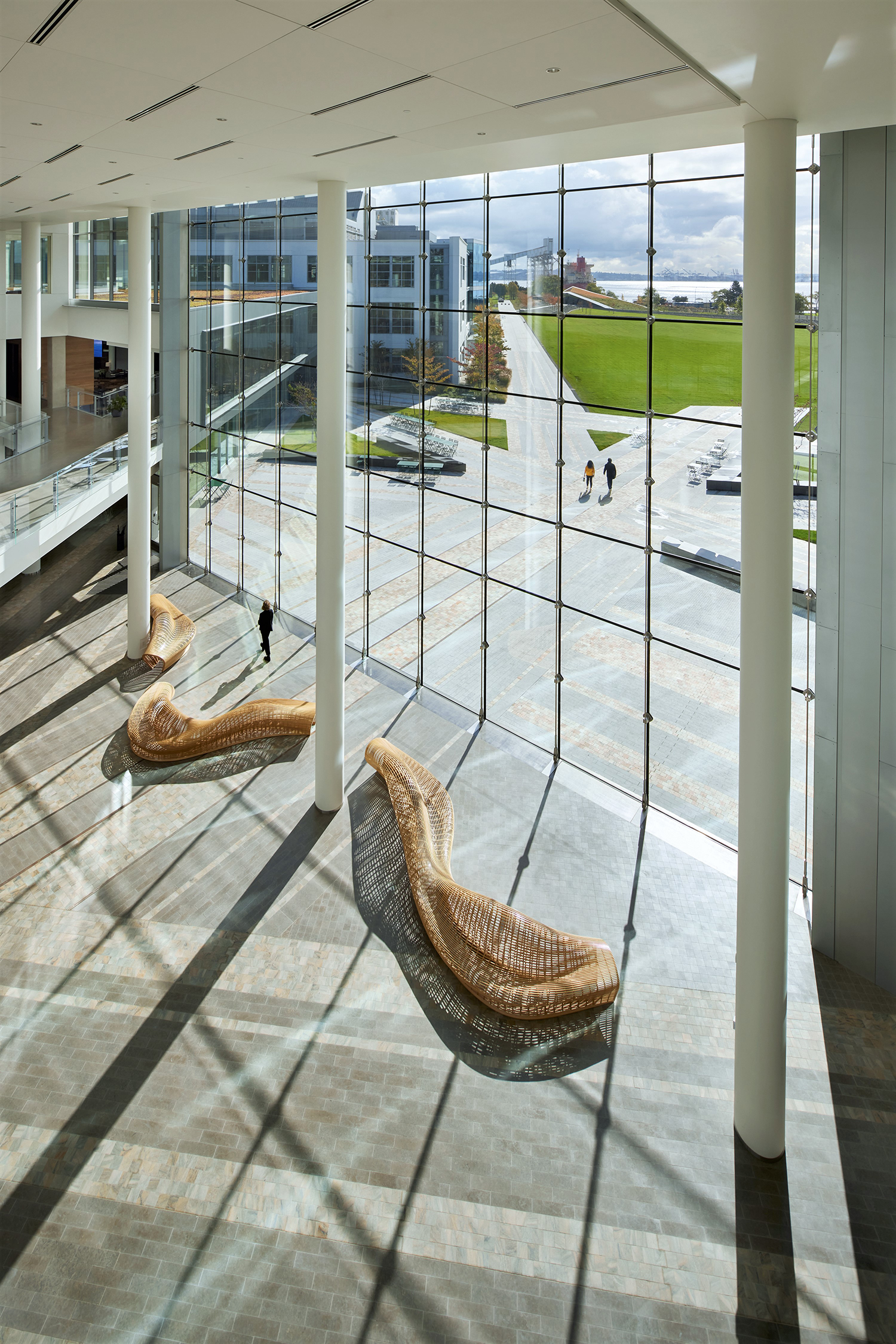Illuminating Spaces
 1 AIA LU/HSW; 1 IDCEC CEU/HSW; 0.1 ICC CEU; 0.1 IACET CEU*; 1 AIBD P-CE; AAA 1 Structured Learning Hour; This course can be self-reported to the AANB, as per their CE Guidelines; AAPEI 1 Structured Learning Hour; This course can be self-reported to the AIBC, as per their CE Guidelines.; MAA 1 Structured Learning Hour; This course can be self-reported to the NLAA.; This course can be self-reported to the NSAA; NWTAA 1 Structured Learning Hour; OAA 1 Learning Hour; SAA 1 Hour of Core Learning
1 AIA LU/HSW; 1 IDCEC CEU/HSW; 0.1 ICC CEU; 0.1 IACET CEU*; 1 AIBD P-CE; AAA 1 Structured Learning Hour; This course can be self-reported to the AANB, as per their CE Guidelines; AAPEI 1 Structured Learning Hour; This course can be self-reported to the AIBC, as per their CE Guidelines.; MAA 1 Structured Learning Hour; This course can be self-reported to the NLAA.; This course can be self-reported to the NSAA; NWTAA 1 Structured Learning Hour; OAA 1 Learning Hour; SAA 1 Hour of Core Learning
Learning Objectives:
- List some of the mental health benefits daylighting can provide.
- Explain why the use of glass and glazing products is important to consider in the design phase.
- Describe protective glass products and how they might impact occupant mental health.
- Discuss the ways in which glazing can maximize views and support mental well-being.
This course is part of the Glass and Glazing Design Academy
Healthcare Settings and Mental Health
In the 19th century, Florence Nightingale observed the poor conditions in hospitals and recognized the impact of the physical environment on patient outcomes. She emphasized the importance of natural light in healthcare settings, particularly in hospitals, to improve the well-being and recovery of patients. She urged architects and hospital administrators to design and build hospitals with large windows and open spaces and promoted the use of architectural glazing in hospital wards, corridors, and common areas. Her ideas laid the foundation for evidence-based healthcare design, with daylighting becoming a fundamental aspect of modern hospital architecture.
Architectural design did take a turn away from daylighting when architects—to utilize new technologies and control lighting—began designing with artificial light. But decades of research have reaffirmed Nightingale’s early theory. Roger Ulrich, a prominent researcher, has conducted more than 50 studies that have significantly influenced the design of healthcare facilities, emphasizing the importance of creating healing environments that support patient well-being and recovery. His most famous study, the 1984 "View Through a Window May Influence Recovery from Surgery" revealed that patients who had a view of nature from their hospital room experienced better postoperative outcomes, including shorter hospital stays and reduced need for pain medication.
Ulrich's research suggested that exposure to nature, even through a window, could help reduce stress, promote healing, and enhance overall well-being during the recovery process. It also highlighted for architects the importance of considering, in advance, the design of healthcare environments and incorporating elements such as access to daylight, green spaces, and views of nature.
In a 2001 study, bipolar patients exposed to daylight and a view of nature had hospital stays that were 3.7 days shorter than those without views and daylight. Other research has shown that Alzheimer’s patients show lower agitation levels with higher exposure to daylight. The impact on medical staff has also been shown to be significant. Views and daylighting have shown a reduction in both stress and risk of circadian rhythm disruption. These elements have decreased sick days by up to 6.5 percent, reduced medication dispensing errors, improved alertness, and improved task performance.
Despite this research, only 44 percent of occupants have access to daylight in state-of-the-art U.S. hospitals. Often, only a small percentage of the floor area is within 15 feet of a window. So, while patient rooms may have more access to light and views, staff still are not provided the same access.
The Workplace and Mental Health
Architectural design plays a crucial role in supporting positive mental health in the workplace, and research has consistently shown that well-designed work environments with access to daylighting and views of nature have significant benefits for employees and businesses alike. Studies conducted over the past two decades have demonstrated that workers in daylit office buildings are 18 percent more productive, leading to a 20 percent increase in overall employee performance.
Additionally, employees working in spaces with views of the outdoors experience a boost in mental function and memory by 10-25 percent, along with increased information processing speed compared to colleagues without such views. "People are often unconscious of glancing out a window, notes Lisa Heschong, author and scientific researcher. They will glance out a window for about 50 percent of the time while they are working if they have the opportunity to," she says, and the action results in larger working memory and long-term memory consolidation. "This is supportive of cognitive function." Architects know this, she says. "Great architecture celebrates the view," says Heschong.
The impact of thoughtful architectural design goes beyond productivity gains. Workers exposed to daylighting and nature views report better quality of life scores, increased vitality, and improved sleep efficiency. The presence of natural light and access to views have been linked to a reduction in absenteeism and employee turnover, allowing businesses to enjoy a more engaged and committed workforce. In a remarkable example, a company in Iowa that incorporated daylighting into their workplace design experienced a staggering 200 percent decrease in turnover rates and tripled their pool of job applicants.
Beyond the tangible benefits, such as increased productivity and reduced absenteeism, employees in spaces with natural light and views of nature generally tend to focus 15 percent more on primary tasks. This heightened level of concentration and engagement positively impacts overall job satisfaction and well-being. With 39 additional work hours per year in productivity per employee, the value of well-designed workspaces becomes evident as an investment in both the employees' mental health and the company's bottom line.
The financial implications are also important. For every $1 spent on building energy costs, there is approximately $10 spent on the building space (rent or ownership) and $100 spent on productivity costs including employee salaries, benefits, and absenteeism. Therefore, any design decision that harms the indoor environmental quality (IEQ), functionality, or occupant health by even a small fraction of a percent will offset any small energy savings by much larger negative impacts and increased costs in the full use of the building.
Steve Selkowitz, principal of Stephen Selkowitz Consultants and affiliate at Lawrence Berkeley National Laboratory, also addressed the ongoing hurdles to the adoption of such high-performance solutions—particularly the greater cost. “We need to convince owners to make investments in things they aren’t doing right now,” Selkowitz said. “Most owners are going to care a little bit about the planet. But they care more about the people that occupy the space. So, we need to bring it back to the occupants.”

Photo: Benjamin Benschneider; courtesy of Sentech Architectural Systems
It is important that designers consider the positive impact of daylighting and views on mental health while also integrating energy efficiency and thermal comfort elements.
Glazing Design for Daylighting, Biophilia, and Privacy
Architects are charged with satisfying many different design goals simultaneously, especially with new challenges such as net-zero energy goals.
“I worry that there is a misunderstanding of the balance between energy efficiency and window area, which is related to daylighting and views,” says Dr. Thomas Culp, owner of Birch Point Consulting, and co-vice chair of the ASHRAE 90.1 standards committee, among other committees. “If we are not careful, this will lead to something I am calling ‘new-age brutalism,’ buildings that look good on paper in a simplistic energy model with small openings but that are actually poorly designed spaces with restricted views. I try to personalize it when talking to architects. Would you want your child trying to learn in a classroom with no natural daylight? Or your mother recovering in a patient room with no window? We need healthy spaces to live, work, learn, play, and heal, and natural daylight and views are essential to that. Buildings serve a purpose for people, businesses, and industry. They will use energy; we just need to do it efficiently and cleanly. It’s all about balance.”
It is important that designers consider studies that demonstrate the positive impact of daylighting and views on mental health. Understanding the latest technologies, product options, and design strategies can also ensure architects are creating spaces that support the mental health of occupants.
“There are very good tools for daylighting analysis out there now to assess the floor coverage, control layout, and energy savings,” says Dr. Culp. “But that is only half of the puzzle. Studies show the health and wellness benefits are tied to both natural daylight and quality views. Design teams should also be careful to look at view angles based on the use of the space. For example, some people say glazing low to the floor in a midrise or highrise building is not useful, but that’s not true. There are important view angles both horizontally and vertically, looking both to the sky and down to the surrounding area. And of course, use the highest performance systems. Don’t just use what you did on the last project; look at the new technology in both glazing and framing systems, such as fourth surface low-e, triple glazing, vacuum glazing, advanced higher performance thermal breaks, building integrated photovoltaics, etc.”
Window Type Selection
Architects can specify various window types that are specifically designed to optimize daylight penetration while simultaneously controlling glare and heat gain. These specialized window glazing technologies play a crucial role in achieving effective daylighting, creating a well-lit and comfortable interior environment for building occupants.
Low-E Coatings: Low-emissivity (low-e) coatings are thin, transparent layers applied to the surface of the glass. These coatings are designed to minimize heat transfer through the window, thereby reducing both heat gain during hot weather and heat loss during cold weather. Low-e coatings work by reflecting a significant portion of the infrared radiation (heat), while still allowing visible light to pass through. This helps maintain a more stable indoor temperature and decreases the reliance on heating and cooling systems, contributing to energy efficiency.
Spectrally Selective Coatings: Spectrally selective coatings are another type of advanced glazing technology that provides greater control over the solar energy entering the building. These coatings are engineered to selectively block certain wavelengths of light, including infrared and ultraviolet radiation, while allowing visible light to pass through. By filtering out the unwanted portions of the solar spectrum, spectrally selective coatings can significantly reduce heat gain while maintaining good daylight levels. This helps maintain a comfortable indoor environment while reducing the demand for air conditioning.
Tinted Glass: Tinted glass is a type of glazing that contains additives to alter the color and light transmission properties of the glass. Tints can range from light to dark, and they help regulate the amount of sunlight and heat entering the space. Tinted glass is often used in regions with intense sunlight exposure to control glare and reduce solar heat gain, especially in buildings with large south or west-facing facades.
Double and Triple Glazing: Double and triple glazing refers to windows with two or three layers of glass separated by air- or gas-filled spaces. These multiple layers provide enhanced insulation and reduce heat transfer, improving the overall energy efficiency of the building. The extra layers of glass can also help reduce noise transmission from the outside, especially if laminated glazing is incorporated, creating a quieter and more comfortable indoor environment, which can positively affect occupant mental health.
Dynamic “Switchable” Glazing: Dynamic glazing, also known as smart or switchable glazing, is an innovative technology that can adapt its transparency in response to external factors like sunlight intensity or electric current. Electrochromic and thermochromic glazing are examples of dynamic glazing. By dynamically adjusting the glazing's opacity, these windows can control the amount of daylight and solar heat entering the building, providing a highly customizable and responsive daylighting solution.

Photo: Benjamin Benschneider; courtesy of Sentech Architectural Systems
Architects who carefully consider the orientation and location of windows can create spaces that are well-lit, comfortable, visually engaging, and support positive mental health.











